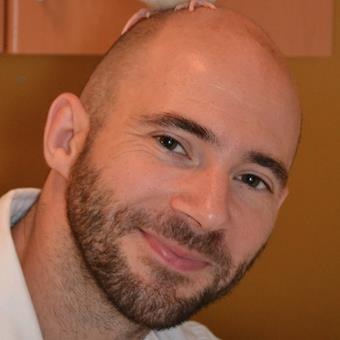The bigger the comb, the greater the success on the hens’ mating market. A team of researching evolutionary genetics at Linköping University previously identified two genes that produce splendid combs and strong bones as well – a characteristic that in its turn increases the hens' ability to lay many eggs, since the bones also function as a source of calcium for the egg shells.
When the researchers led by Dominic Wright (pictured) went further with what is known as microarray analysis, they discovered that significantly more genes were involved.
“We discovered that significantly more genes, which are close to one another in the genome, influence the weight of the comb, bone density and fertility. These genes are probably passed down in a single block,” says Mr Wright.
In the study, being published in the journal Molecular Ecology, chickens from the original Red Junglefowl species were crossed with common laying hens for eight generations. This method makes it possible to document the function of individual genes.
“The results show that several of the genes are pleiotropic – they exert an influence over several different characteristics at the same time, and are surrounded by a cluster of linked genes that take part in the process,” says Mr Wright.
His findings may also explain how domestication in general develops on a genetic level, where several genes that affect the domesticated animals’ visible characteristics are clustered in specific areas of the genome.
The genetic variation gradually decreased over the course of domestication. We do have knowledge about a number of areas in the genome, with stable genes that regulate the typical characteristics of the domestic chicken. One example is these combs, which are significantly larger in the domestic chicken compared with their wild ancestors. By regulating production of cartilage, the gene governs the size of the comb and growth of the bones and, ultimately, egg production as well.
Article: The role of pleiotropy and linkage in genes affecting a sexual ornament and bone allocation in the chicken by M Johnsson, C-J Rubin, A-S Sahlqvist, K B Jonsson, S Kerje, O Ekwall, O Kämpe, L Andersson, P Jensen and D Wright. Molecular Ecology accepted March 2014. doi: 10.1111/mec.12723